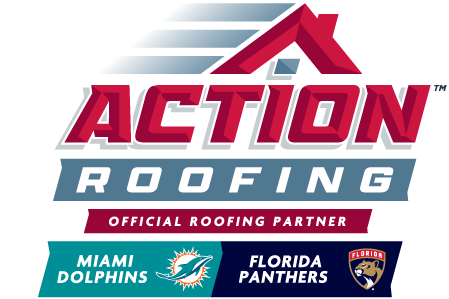South Florida’s heat and humidity roll out the welcome mat for rooftop mold. If your shingles have dark streaks or blotchy patches, you’re probably looking at more than just dirt buildup. Whether you’re dealing with a current issue or trying to stay ahead of a potential one, a little maintenance now goes a long way.
Why Mold Builds Up Faster in Humid Climates
Mold loves heat, moisture, and stillness. When you live in a place where rain comes often, humidity stays high, and temperatures rarely dip, mold doesn’t need much time to settle in. Your roof holds onto warmth. The parts that don’t get much sun, especially on the north or shaded side, stay damp after a storm. If there’s debris in the way, like piles of wet leaves or branches, moisture hides even longer. That damp layer becomes the perfect home for mold.
You might see dark streaks that seem harmless at first, but they grow fast and sink deeper into your shingles. If you have trees hanging over your roof, the problem can grow worse since the shade keeps your shingles from drying out after it rains. And once mold starts spreading, it gets harder to clean without damaging your roof. That’s why prevention matters so much in this kind of climate.
The Difference Between Mold and Algae on Your Roof
Not everything green or black on your roof is mold. Sometimes it’s algae, and knowing the difference helps you figure out what to do next. Algae usually show up as dark streaks that look like dirty water stains. It tends to stay on the surface and spreads when spores land in damp spots.
Mold can look darker, greener, or even fuzzy in places, and it’s more likely to grow where moisture sits for long periods. It can also smell musty, especially if it spreads into your attic. Algae are mostly a cosmetic issue, but mold can weaken materials and hurt your indoor air. Either way, it doesn’t look great, and both problems spread when left alone. If you’re not sure what you’re dealing with, a roofing professional can take a look and let you know the best way to clear it without damaging the shingles underneath.
How to Spot Early Signs of Mold Growth
Your roof doesn’t give you many chances to peek at it up close, so early signs of mold can slip by. You might first notice a patch of discoloration that wasn’t there a few months ago. If the spot seems to grow or turn darker after a stormy week, that’s something to pay attention to. Sometimes, mold appears as fuzzy, streaky, or blotchy growth that doesn’t match the texture of your shingles.
You might also see greenish marks near your gutters or where tree branches hang low. If you spot anything strange when you’re cleaning the yard or hanging lights, take a picture and keep an eye on it. Checking your attic for musty smells or signs of water stains on the rafters can also help. The earlier you catch mold, the easier and less expensive it is to clean up.
Why Cleaning Mold Requires a Gentle Approach
It might be tempting to blast mold off your roof with a pressure washer, but that move can do more harm than good. Strong water pressure strips off the protective layer of granules on your shingles and can even crack older ones. Instead, use a soft wash method with the right cleaning solution made for roofs. These cleaners break down mold without damaging the surface underneath.
Some include mildewcides or detergents that stop the mold from coming right back. You’ll still need to rinse the area, but it’s more of a soak and wash than a high-powered blast. If you try to do it yourself, be careful with ladders and slippery surfaces. Moldy areas stay slick, and wet shingles don’t give you much to grip. Most homeowners find it’s safer to let a trained pro handle the job, especially if the mold has spread across a large area.
Preventing Mold From Coming Back
’
Once you’ve cleaned your roof, the next step is to stop mold from making a return. Cut back tree branches that are too close to your roof. More sunlight on your roof helps it dry faster after a rain, which cuts down the moisture mold needs. Have your gutters cleaned regularly so that water flows off the roof instead of pooling around the edges.
If you have areas that always seem damp, consider adding zinc or copper strips near the ridge. When rain hits these strips, it releases small amounts of metal that help prevent mold and algae growth. These strips don’t hurt your shingles, and you barely see them once they’re in place. Ventilation also plays a part. If your attic stays stuffy and warm, it traps humidity. Make sure your vents are clear and working well, especially if you live in an older home that doesn’t have modern roof vent systems.
When Mold Signifies a Bigger Problem
Sometimes, either your roof isn’t draining properly, or water is getting underneath the shingles. If you’ve cleaned a spot of mold, and it comes back quickly, you might have a leak, sagging shingles, or worn-out underlayment.
Mold in your attic, especially near vents or rafters, can point to poor insulation or blocked airflow. If the problem sticks around even after a cleaning and a few adjustments, it’s a good idea to have someone inspect the full roof. They might find flashing that has come loose, vent boots that have cracked, or sections of the roof that dip and collect water. These spots let water linger longer, which lets mold keep growing. Fixing the source of the moisture stops the cycle and keeps the problem from spreading into your house.
How Climate Changes Your Maintenance Plan
Living in a coastal, subtropical climate changes how you take care of your roof. Frequent storms, high humidity, and salty air all affect how quickly mold forms and how fast your shingles wear down. You might find that your roof needs cleaning more often than you’d expect in other parts of the country. Every six to 12 months, take a close look, or have a professional inspect it for signs of growth.
After big storms, check for damage or debris that might trap moisture. If your house sits near water or has heavy tree branches hanging overhead, consider scheduling roof checks as part of your yearly home maintenance routine. The more you stay ahead of mold, the less likely it is to cause damage, and the longer your roof will last.
Why Professional Cleaning Matters
DIY cleaning might save money up front, but it comes with risk. Besides the safety concerns of working on a wet or moldy roof, using the wrong chemicals can void your roof’s warranty or strip protective layers off your shingles. Our licensed roofers know what works and what doesn’t. They have the right cleaners, ladders, and harnesses to do the job safely. Plus, they can spot trouble areas that might be hiding beneath the mold.
You’ll enjoy peace of mind when you know your roof is mold-free and not headed for a more serious problem. If your roof is already showing wear, a professional can tell you whether a repair or partial replacement might make more sense than just another cleaning. That kind of input helps you protect your home without guessing.
Save Your Roof From Mold Today
Regular checks, clean surfaces, and the right roofing materials can keep mold from taking hold in the first place. We offer gutter, roof inspection, repair, and installation services. If you’re tired of scrubbing or worried about what’s hiding up there, let Action Roofing in Fort Lauderdale, FL, help you take care of your roof the right way.




